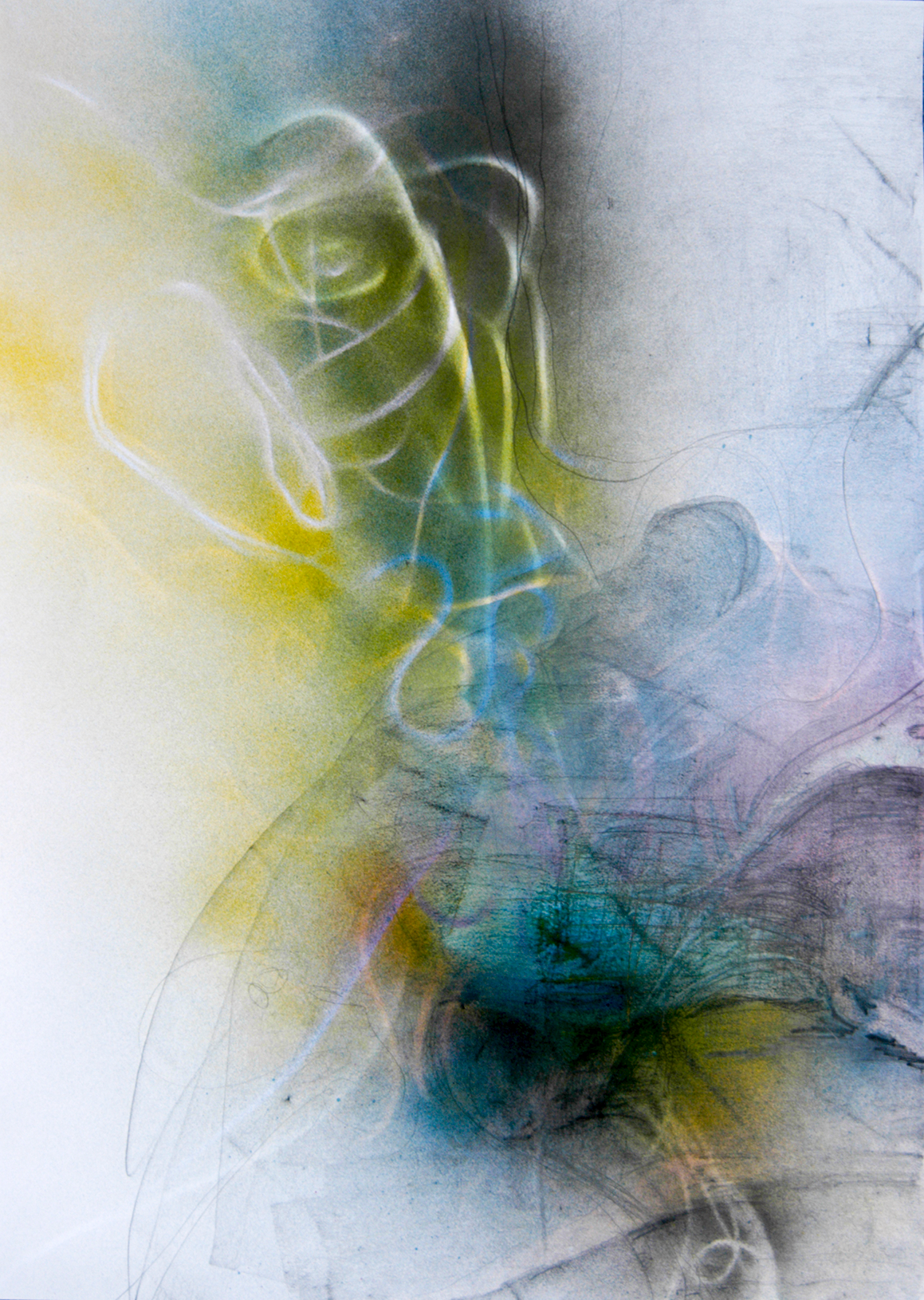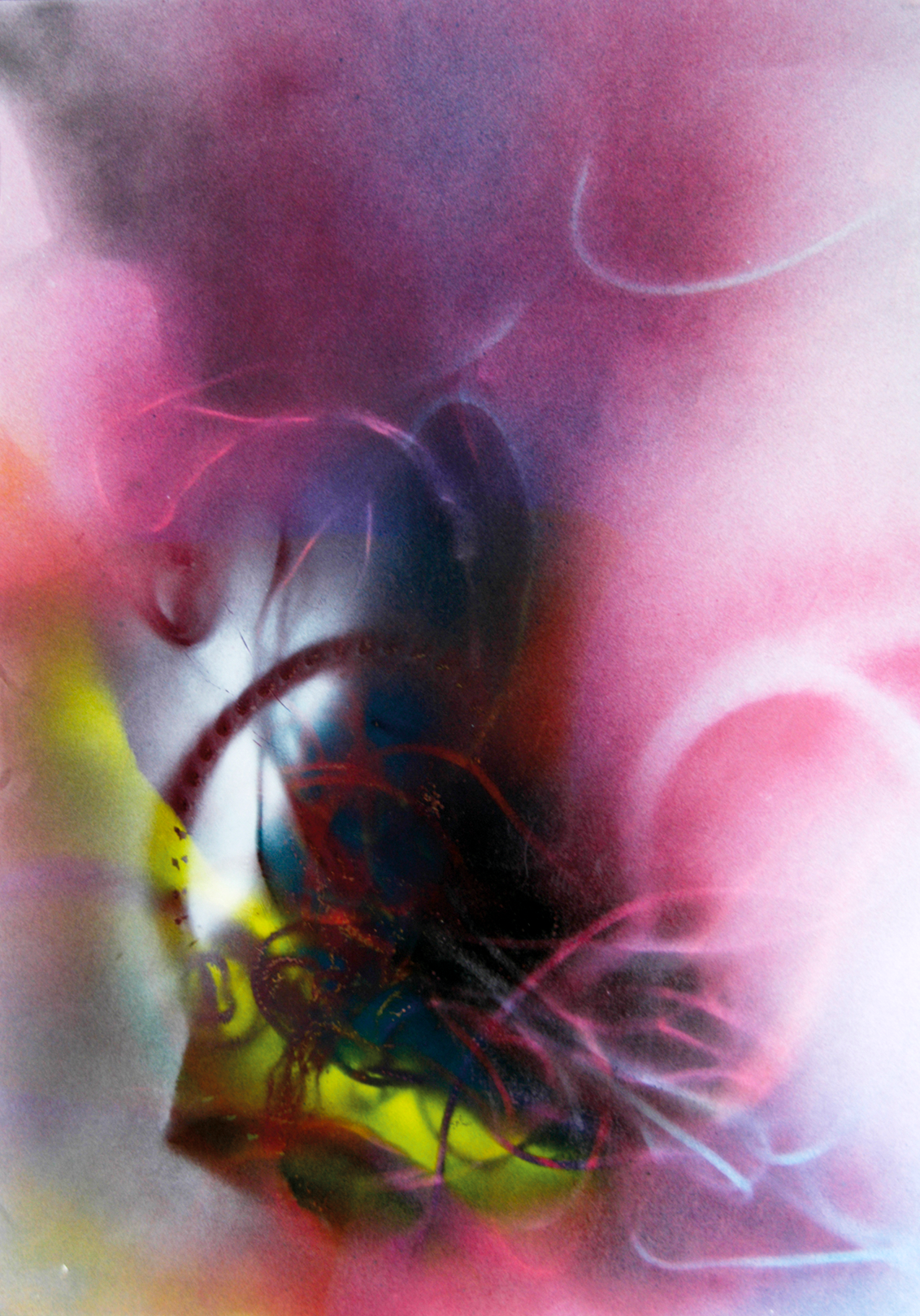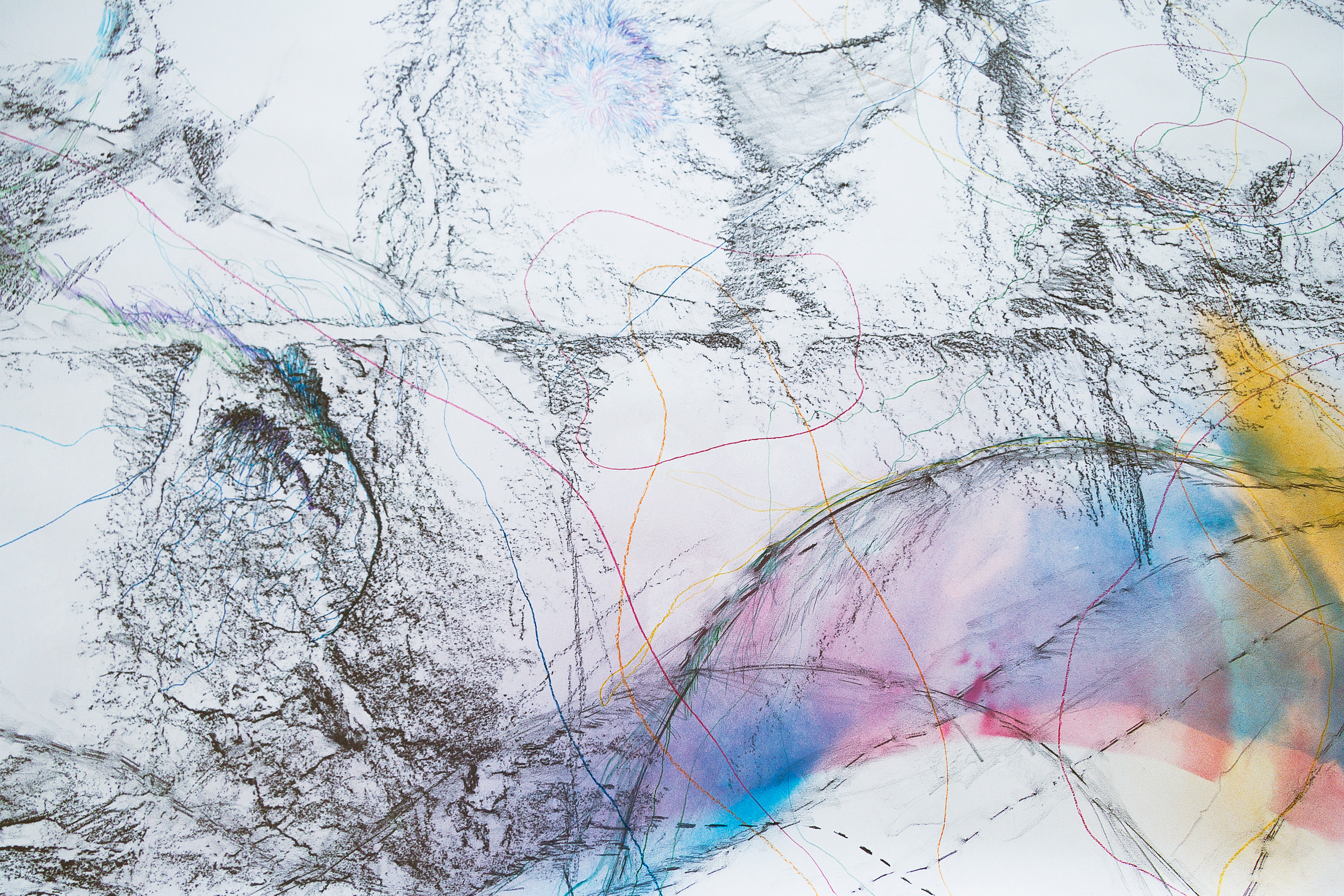
ZEICHNUNGEN
Meine grafischen Arbeiten bilden in kartografischer Manier ihre unmittelbare oder nähere Umgebung ab. Durch Frottagen, Schablonen und Abdrucktechniken übertrage ich Strukturen und Objekte auf das Papier, um diese dort zeichnerisch zu ordnen, sowie ihre Relationen herauszuarbeiten.
My graphic works depict their immediate or nearer surroundings in a cartographic manner. Through frottage, stencils and printing techniques, I transfer structures and objects onto the paper. In order to arrange them there graphically, as well as to work out their relations.
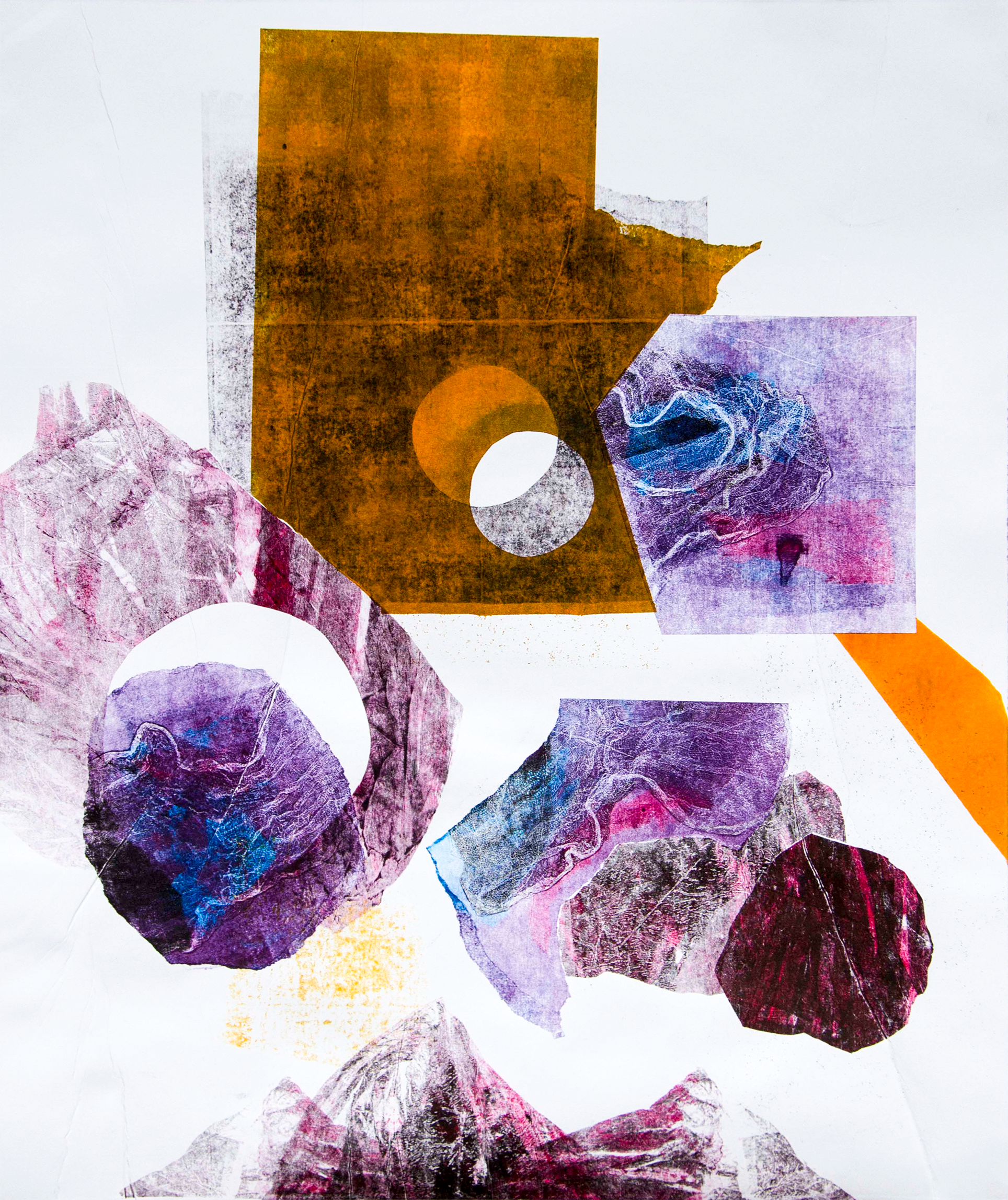
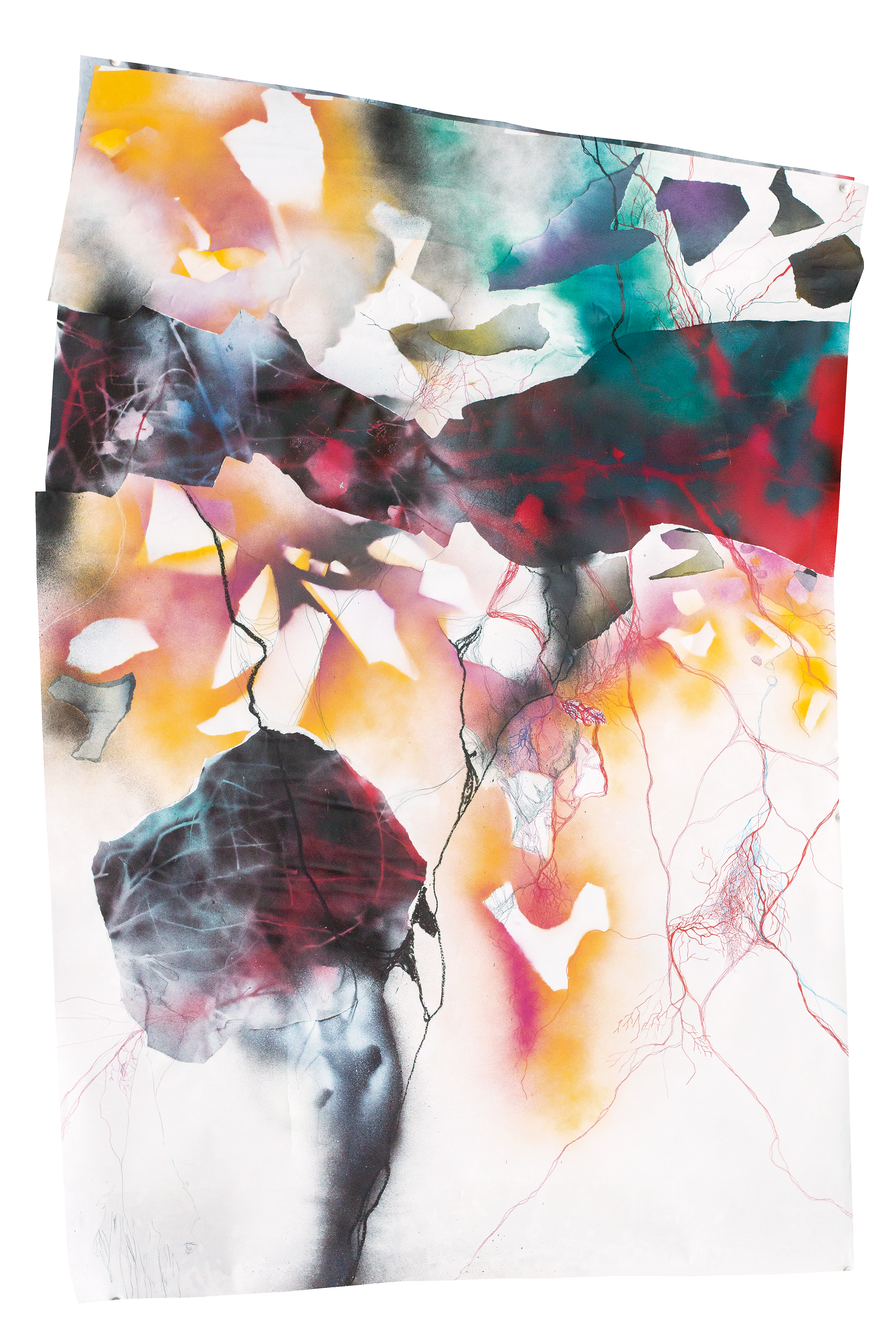
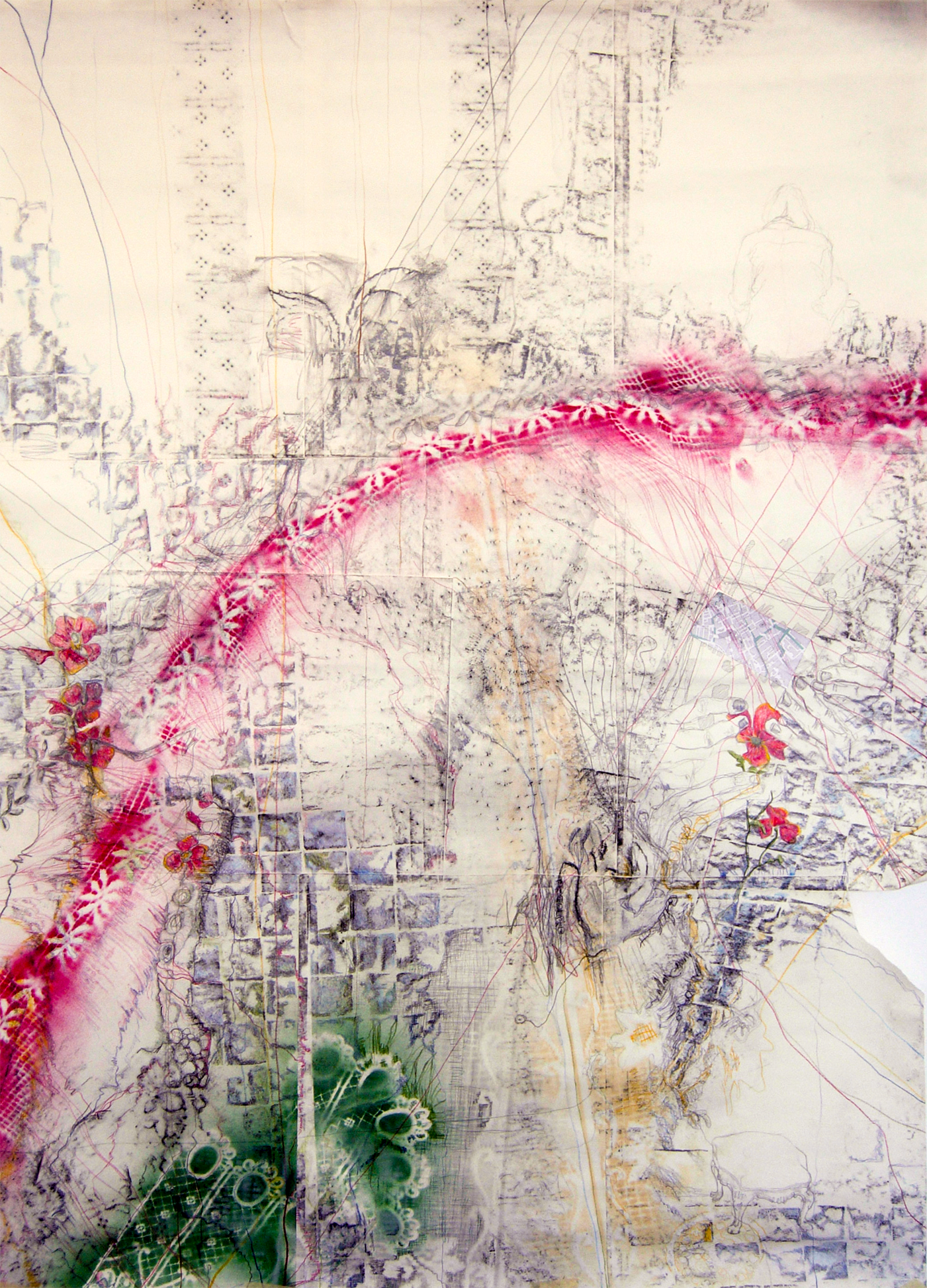
Ohne Titel (Cape Town), 2021
Sprühlack, Buntstift, Bleistift, Grafit auf Papier
Diese Zeichnung entstand während meines Studienaufenthaltes in Südafrika. Grundlage sind Frottagen von Rissen und Brüchen in den Wänden und Fußböden historischer Gebäude auf dem Campus der Kunsthochschule in Kapstadt. Ich sammle diese, Indem ich sie frottagiere. Damit greife ich die allgegenwärtige Thematik der Auseinandersetzung mit der regionalen Geschichte und ihren Auswirkungen auf die aktuelle südafrikanische Gesellschaft auf. Eine Gesellschaft, die meiner Perspektive nach, sehr fragmentiert aussieht. Es geht mir nicht darum, mich mit dem spezifischen Ort oder Gebäude zu beschäftigen, aus dem die Risse stammen, noch möchte ich näher auf die gesellschaftliche Fragmentierung eingehen. Ich greife metaphorisch und stellvertretend für diese Themen die Beobachtung auf, dass die Beschäftigung mit individueller und sozialer Geschichte in Kombination mit Begriffen und Konzepten wie Reparatur, Ausbesserung, Pflege sowohl in den südafrikanischen akademischen Diskursen als auch in gesellschaftlichen Diskursen allgegenwärtig und sehr prägend zu sein scheinen. Die (historischen) Risse an Wänden und Böden, die zu Gebäuden aus verschiedenen Epochen der südafrikanischen Geschichte gehören, scheinen mir eine recht treffende metaphorische Essenz dieser Komplexe zu sein. Die Frottagen verdichten sich zu einer Kartografie, einer Komposition. Sie teilen und organisieren das Papier in Segmente. Ein weiteres wichtiges Element dieser Zeichnung ist Rasierklingendraht, der ebenfalls in Form von Frottagen aber auch in Form von Schablonen auftritt. Ein ebenfalls allgegenwärtiges Werkzeug der Regulierung und Fragmentierung von physischen und sozialen Räumen. Es teilt, schützt und reguliert Räume in ihrer Zugänglichkeit.
Untitled (Cape Town), 2021
Spraypaint, Crayon, Pencil,Gaphite on Paper
This drawing contains many frottages from around the Michaelis Campus, especially the Ritchie Building. I am collecting cracks and fractures from Walls, Floors, Buildings. By doing so, I am picking up the omnipresent thematic of dealing with history and its implications on society. A society that looks very fragmented from my point of view. I am not aiming for engaging with the specific place or building of where the cracks stem from. These cracks are taken representative from a place that obviously has a lot of history for the fact that the engagement with individual and social history in combination with notions of Repair, Fixing, Care, seem to be all over South African academia and very defining for South African society. The (historical) cracks on walls and floors that belong to buildings stemming from different periods of South African history, strike me to be a quite defining metaphoric essence of these notions. The frottages are organised into a mapping, a composition. They reflect my perception of the (larger) space surrounding me. I always seek to incorporate multiple elements that stood out to me and may do a good job in describing and alas mapping my environment. In this drawing there is razor blade wire incorporated both in the form of frottages and stencils. This element as well feeds into my recognition of fragmentation, which is applicable to spaces that are divided, protected and often highly regulated in their accessibility. The layer of drawn lines, is me, reacting to the things that exist on the paper, trying to make sense of them, organizing them, exploring. Although I have developed this particular way of evolving drawings quite early within my studies of Fine Arts, I haven’t been working like this for quite a long while now. This way of working only came to live again because it made so much sense with my relocation for my time studies abroad and my role as a visitor to South Africa/Cape Town/Michaelis. I think this role resonates quite well with the observing and aerial perspective that is intrinsic to mapping. The fact that the drawing is ongoing and proceeding on the paper roll reflects on the temporality of my stay in SA.
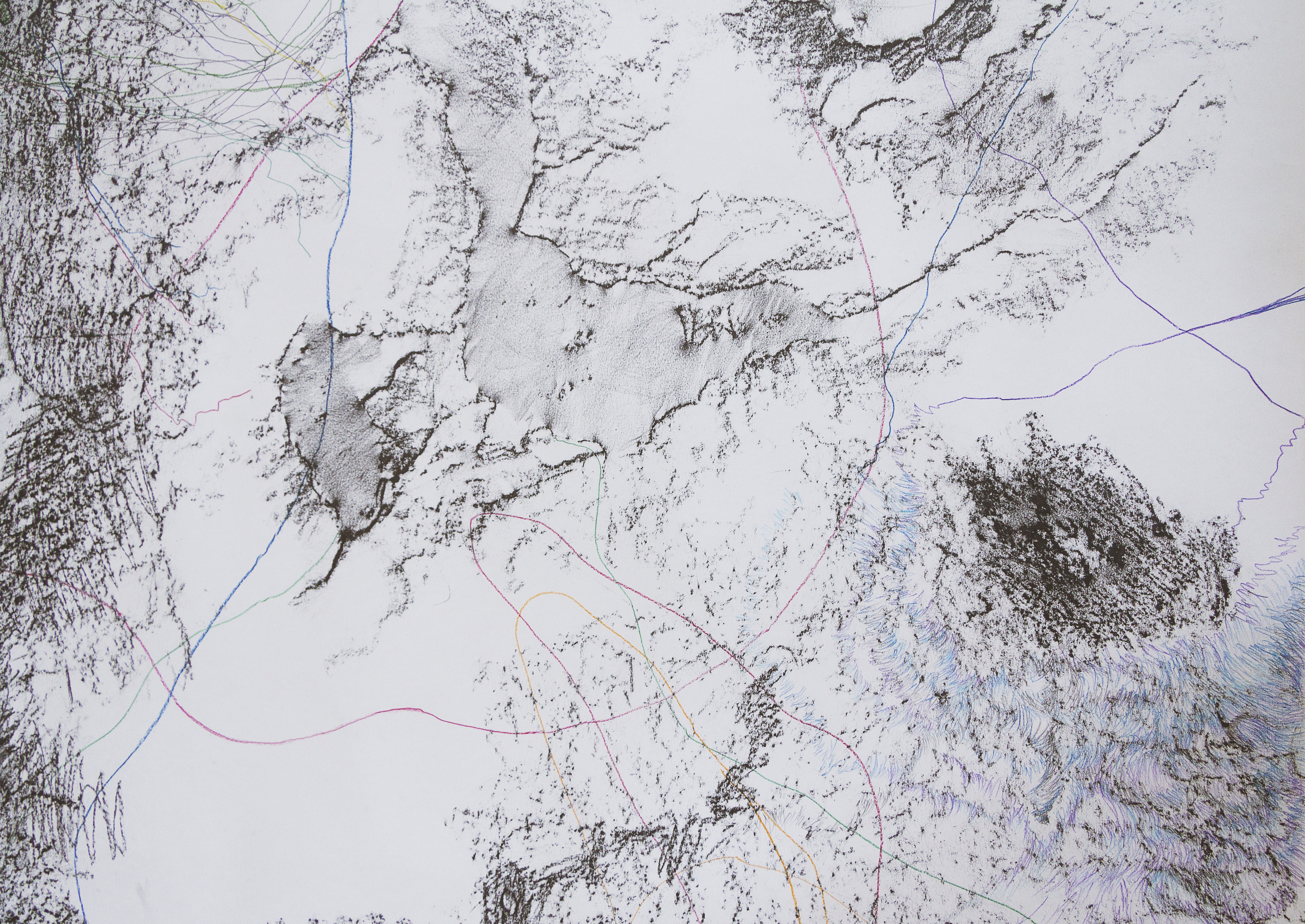
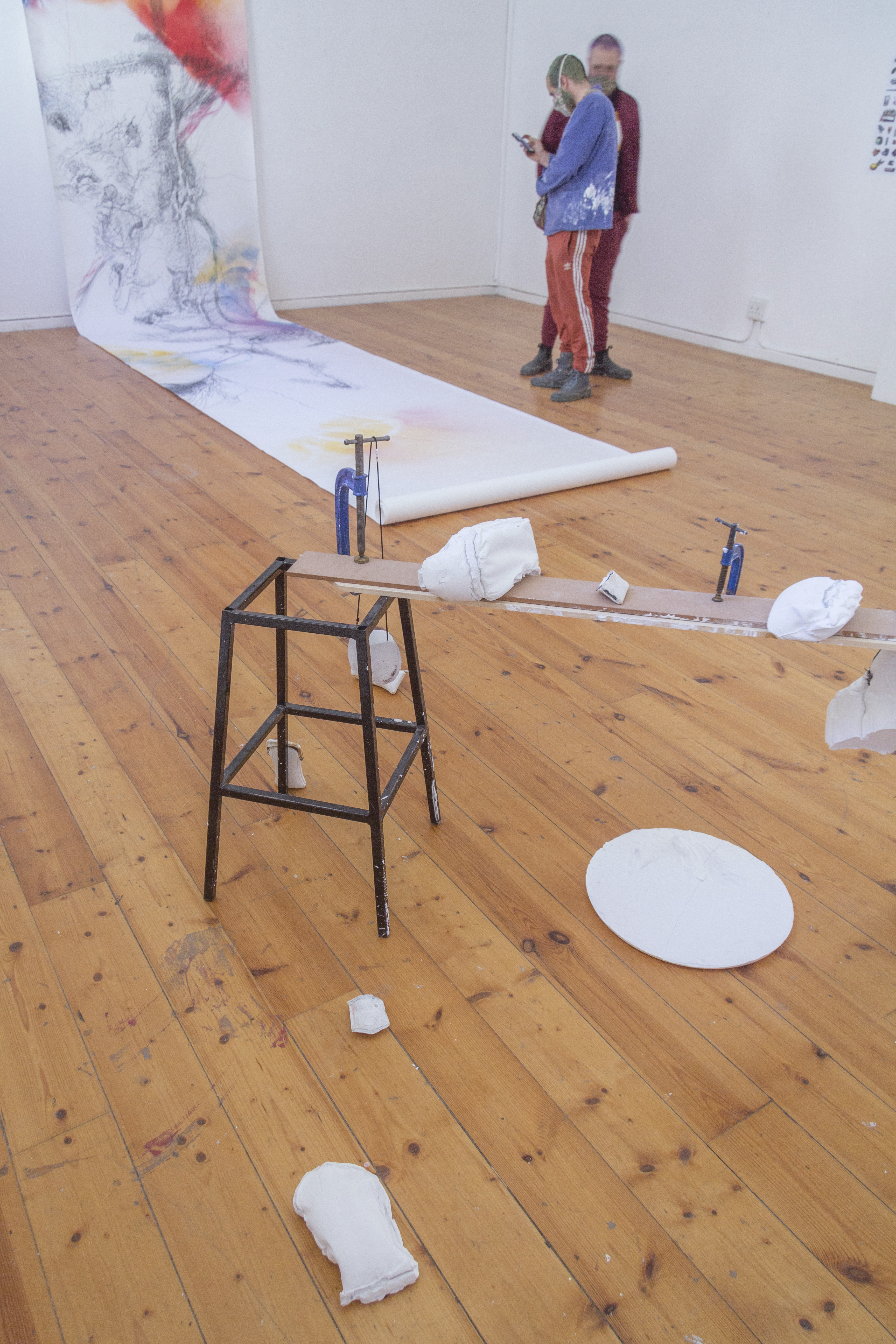
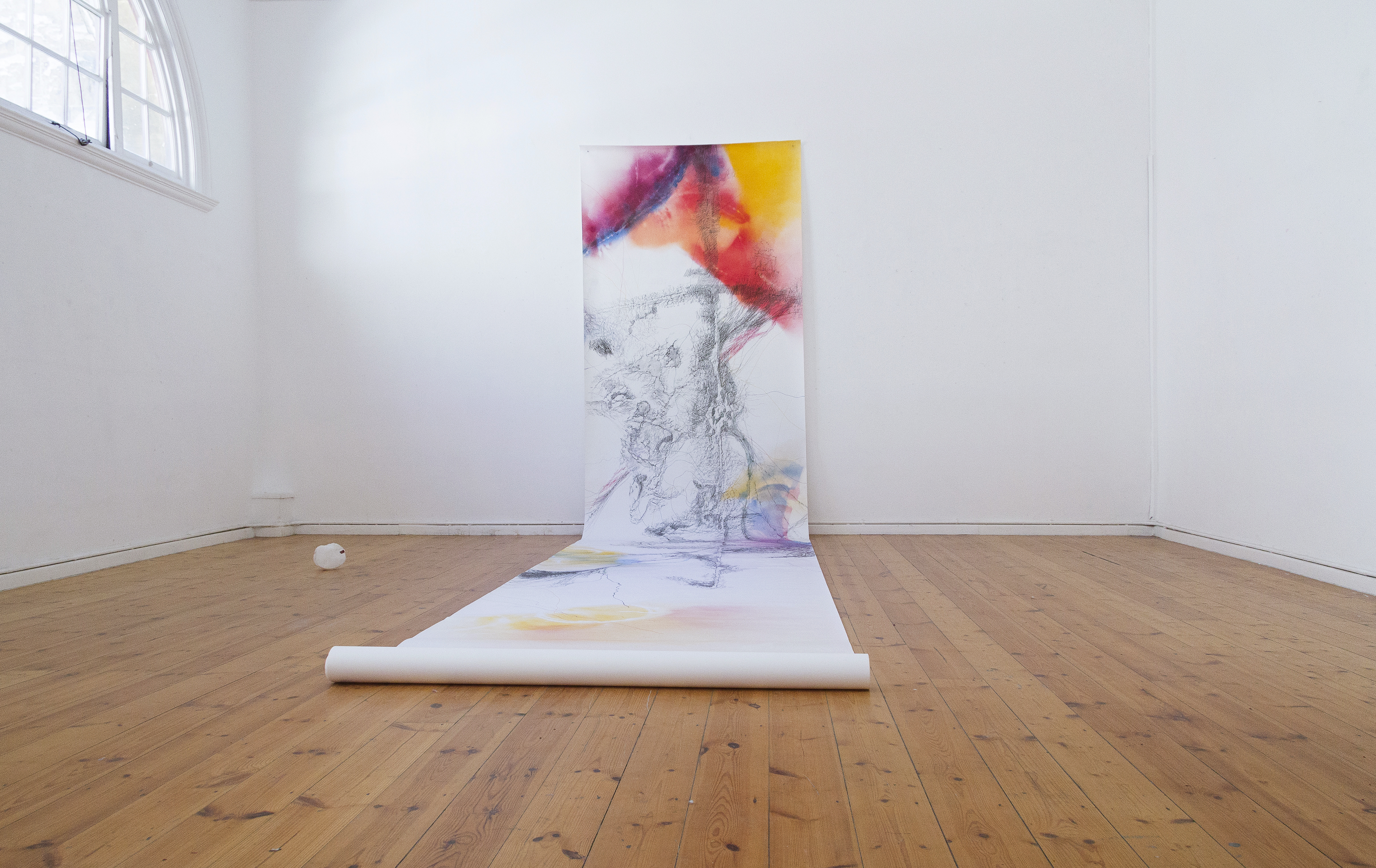

50 Ways To Count The Peas
Wandzeichnung in Zusammenarbeit mit Christian Ann, 2018, Acrylmarker auf Wand, Ca. 3600 x 450cm
Grundlage dieser grafischen Komposition waren einzelne Beobachtungen von Licht, Schattenwurf und Reflexionen, Ausgehend von der Struktur des Raumes, seinen prägnanten Oberlichtern und der resultierenden Lichtsituation. Sie basiert auf einer Vielzahl von einzelnen Zeichnungen der Schattenwürfe und Reflexionen von Gegenständen aus der unmittelbaren und näheren Umgebung des Raumes sowie der Kunsthalle zu Kiel.
50 Ways To Count The Peas
Wall Drawing in collaboration with Christian Ann, 2018, Acrylic markers on wall, Appx. 3600 x 450cm
The basis of this graphic composition were individual observations of light, shadows cast and reflections, Starting from the structure of the room, its concise skylights and the resulting light situation. It is based on a large number of individual drawings of the cast shadows and reflections of objects from the immediate and close surroundings of the room and the Kunsthalle zu Kiel.

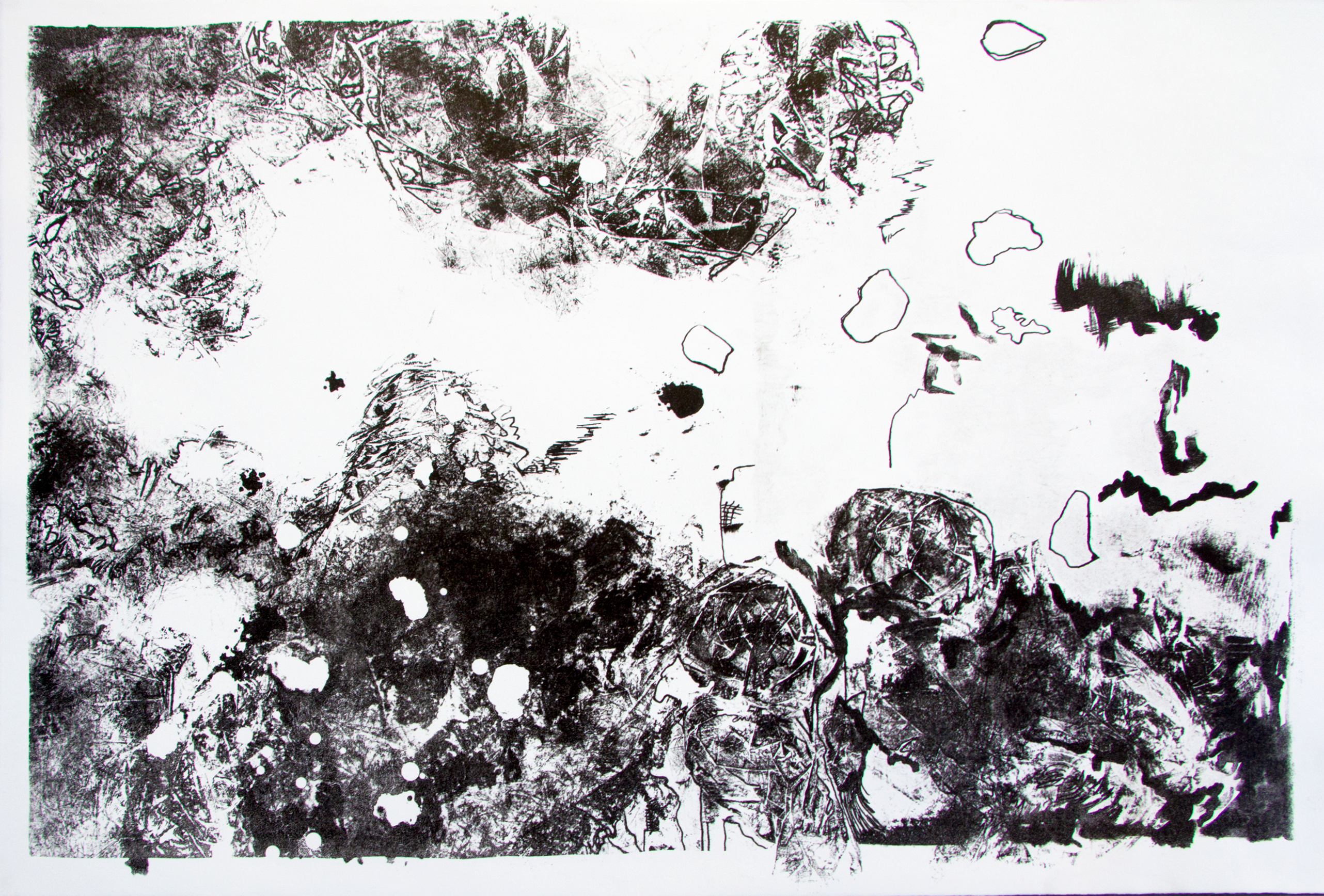
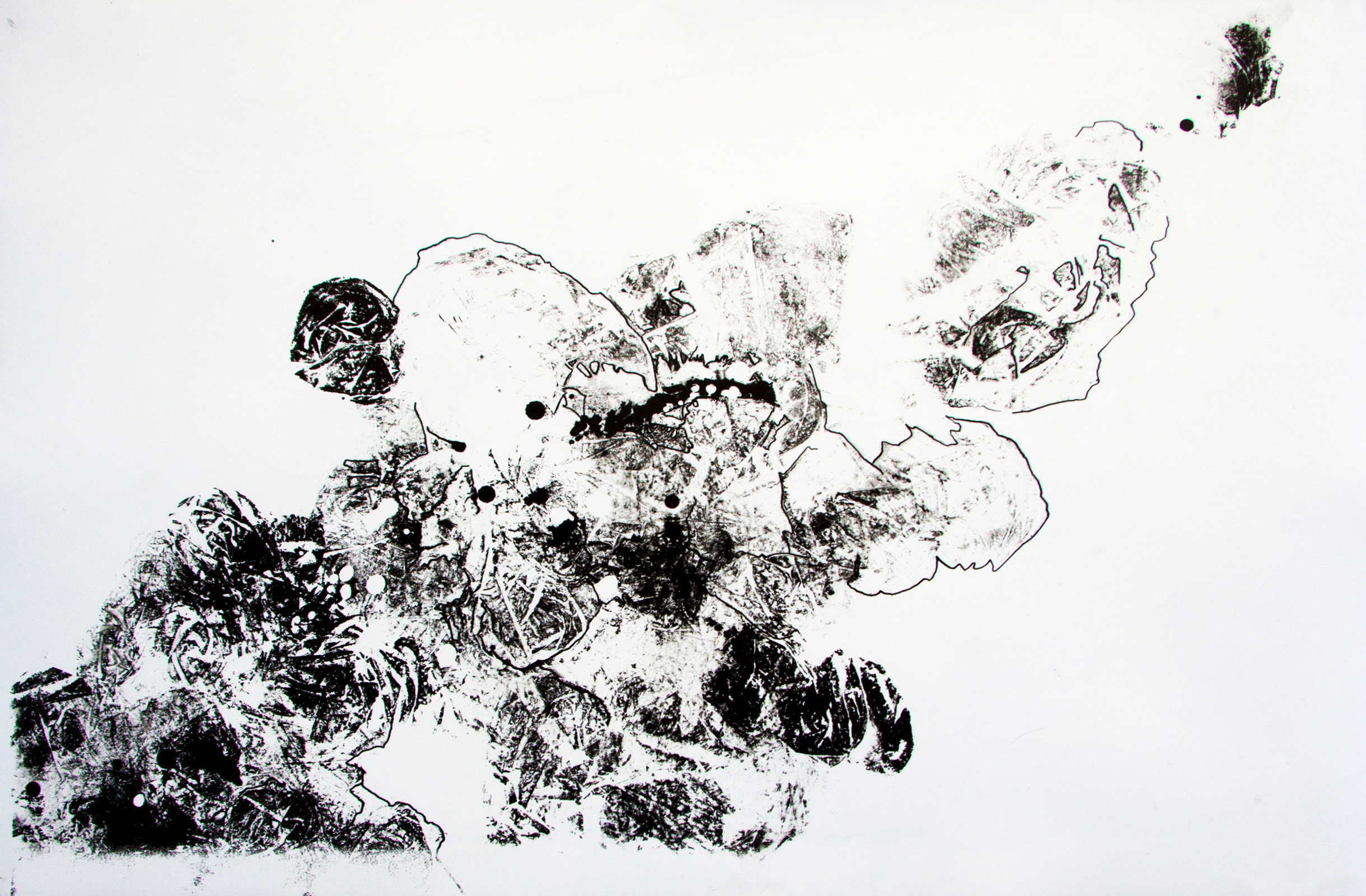
Ohne Titel
Ohne Titel (1), 2015, Sprühlack, Bleistift, Buntstift, Grafit auf Papier, (150cm x 200 cm)

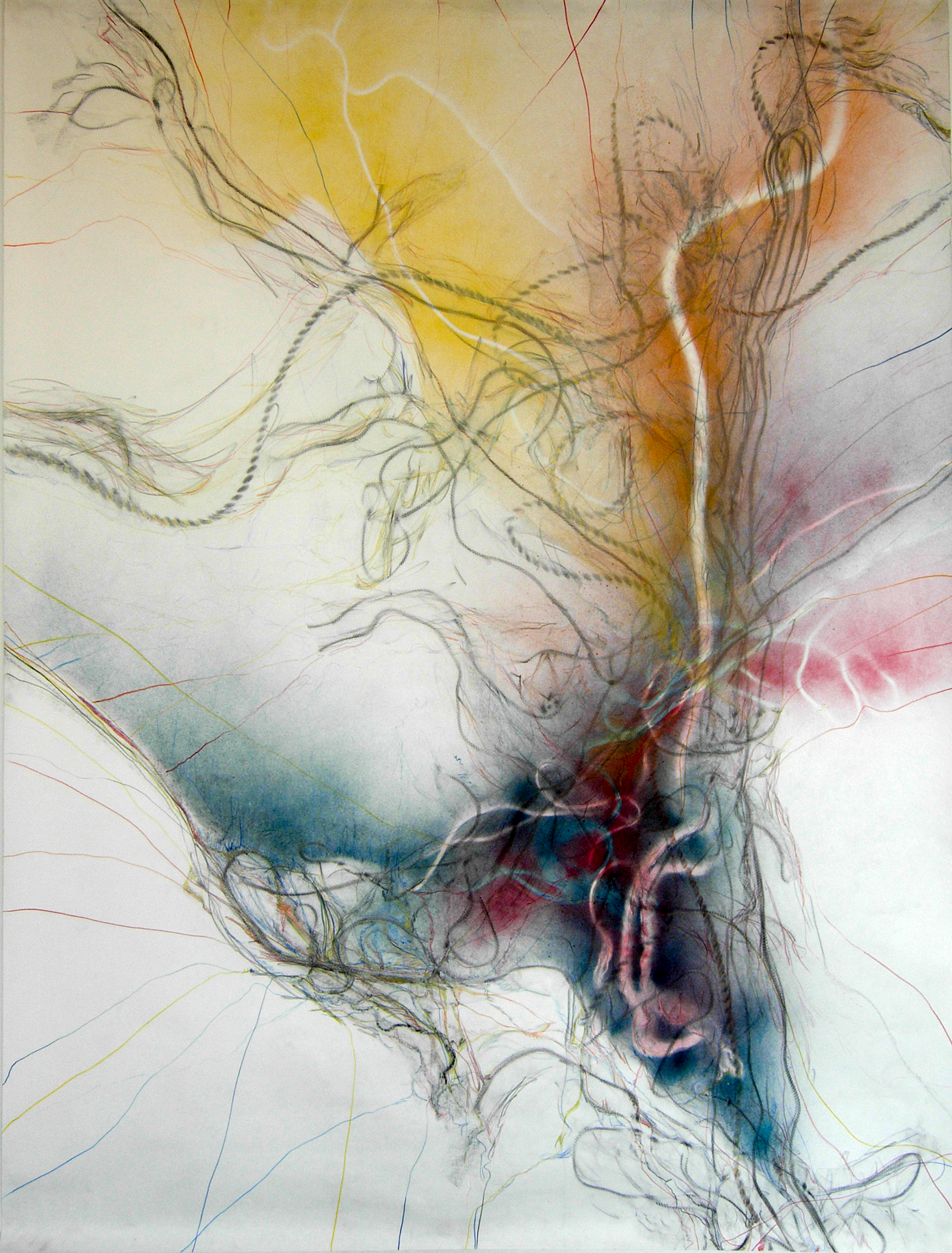
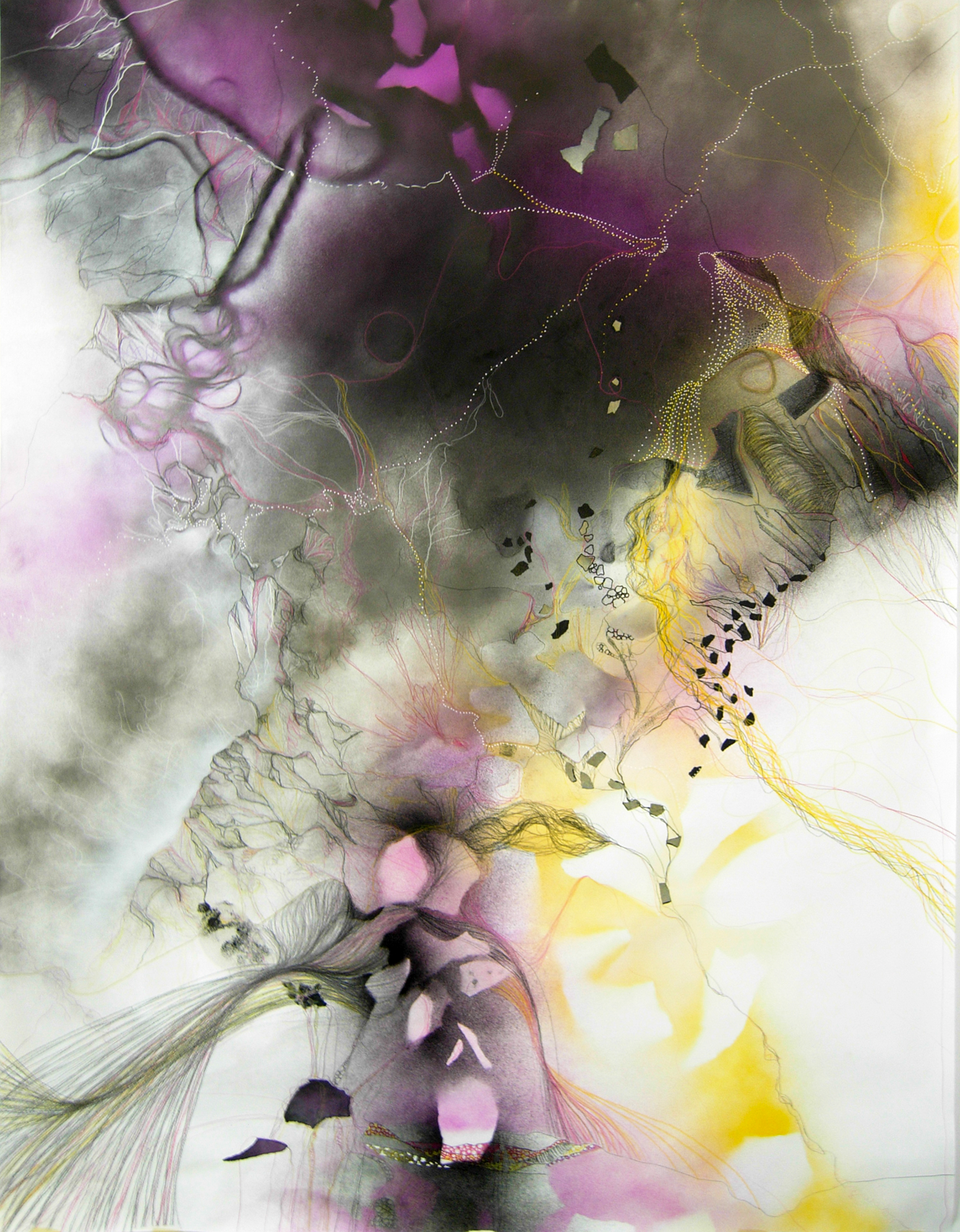

zurück
Ohne Titel
Ohne Titel (1), 2015, Sprühlack, Bleistift, Buntstift, Grafit auf Papier, (59,4 x 84 cm)



